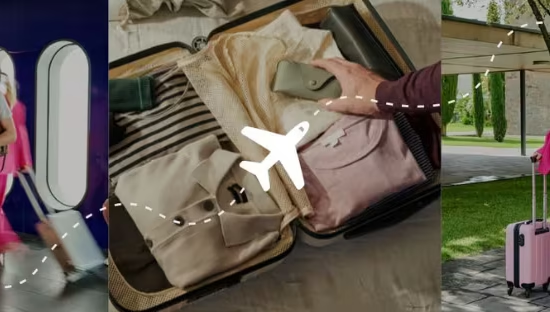
Young, Mobile and eSIM-Ready: The Travelers Powering a Connectivity Shift
The way we connect while traveling is undergoing a radical transformation—and eSIM technology is at the heart of it. No more searching for a SIM card kiosk at the airport, no more swapping tiny chips between devices, and no more surprise roaming bills. Instead, travelers can now scan a QR code, download a data plan in seconds, and be instantly connected—no matter where they are.
At Alertify, we’ve been monitoring this shift for years. As one of Europe’s leading travel technology media and roaming consultants, we’ve worked with dozens of global eSIM providers and tracked user adoption trends closely. The verdict? eSIMs aren’t just the future—they’re the present, especially among younger travelers who demand seamless, flexible, and affordable mobile connectivity on the go.
Recent research from Proximus Global, reported by Telecompaper, confirms what we’ve long observed: the 16–35 age group is leading the charge in eSIM adoption for international travel—particularly outside of Europe.
Key Findings: Young Travelers and eSIM Intent
According to the study:
“Among those who are familiar with eSIMs, the 16–35 age group shows the highest intention of acquiring such an offer for travelling outside Europe, at 53–58% of respondents.”
That’s a striking figure. It means over half of young eSIM-aware travelers are already planning to use the technology to stay connected when they leave the EU. Older age groups, on the other hand, show only marginal increases in intent.
The generational gap is clear—and it’s growing.
U.S. Leads the Way, Europe Rises Fast
Globally, the United States leads in eSIM adoption, with nearly 1 in 3 consumers now using an eSIM. That’s more than double the awareness and usage rates seen across many European countries. However, if younger European travelers continue to adopt at this pace, the region could quickly narrow the gap.
This signals two important things:
- eSIM is not niche anymore.
- The market is maturing rapidly—and younger travelers are setting the pace.
Why eSIM Resonates with the 16–35 Age Group
So what’s behind this generational surge?
- Digital Natives: This group grew up with smartphones, online check-ins, and instant everything. Swapping plastic SIMs feels outdated.
- On-the-Move Lifestyle: From Erasmus students and digital nomads to frequent solo travelers and remote workers, younger travelers are more mobile and internationally connected than ever.
- Cost Awareness: eSIMs often offer cheaper data rates than traditional roaming, especially outside Europe.
- Speed and Convenience: No need to find a local SIM card store or speak the local language—just scan, install, and go.
What This Means for the Travel and Telecom Industry
This shift isn’t just about tech—it’s about behavior. And for telecoms, travel companies, and digital marketers, it’s a massive opportunity.
eSIM Providers: Focus your messaging on younger segments. Optimize onboarding UX. Offer competitive plans with multi-country bundles.
Travel Brands: Bundle eSIMs into flights, tours, or hotel check-ins. Think of eSIMs like travel insurance—a must-have upsell.
Retailers & Airports: Physical SIM card kiosks still dominate, but they’re on borrowed time. Smart airport operators and duty-free retailers should partner with eSIM providers now.
Tourism Boards: Promoting your destination? Help travelers stay connected by recommending or even sponsoring local eSIM partners.
Conclusion: Europe’s Youth Could Be the Tipping Point in Global eSIM Adoption
The surge in eSIM interest among Europe’s 16–35 age group is not an isolated trend—it’s part of a broader shift in the global mobile ecosystem. While the United States remains the global leader in eSIM adoption with nearly 1 in 3 consumers using the technology (source: GSMA Intelligence), Europe’s younger generation now holds the potential to close that gap and reshape how the continent connects internationally.
This is particularly significant given the sluggish pace of eSIM rollout by many European mobile network operators. Compared to regions like East Asia, where South Korea and Japan have pushed aggressively for eSIM as a default offering in flagship phones and prepaid plans, much of Europe is still catching up—both in consumer education and telecom infrastructure.
What makes Europe different, however, is how demand is being driven bottom-up by digital-native travelers, rather than top-down by regulators or telcos. As younger users adopt eSIMs through independent platforms like Airalo, Nomad, Holafly, and Airhub, they’re bypassing traditional carriers entirely—mirroring what we’ve seen in neobank and fintech disruption over the past decade.
The GSMA Mobile Economy 2024 report underscores this parallel: as mobile internet penetration plateaus, value-added services like eSIMs will define the next frontier of telecom growth—especially among mobile-first populations.
And the implications go beyond convenience. A generation of travelers equipped with eSIMs is also more empowered to compare, switch, and demand better value. This introduces a new layer of competition and transparency into a market that has long relied on opaque roaming pricing and geographic lock-in.
For travel tech platforms and operators, this means the window to embed eSIMs into broader travel experiences is now. Failure to act risks missing out on a long-term behavioral shift. The players that dominate this space will be those who don’t just sell connectivity—but make it invisible, intuitive, and indispensable.
In essence, Europe’s youth may not have led the eSIM revolution—but they may well accelerate its global tipping point.
If you’re in the travel, tech, or telecom space, it’s time to take notice. Because young travelers aren’t just using eSIMs. They’re shaping the future of global connectivity.









